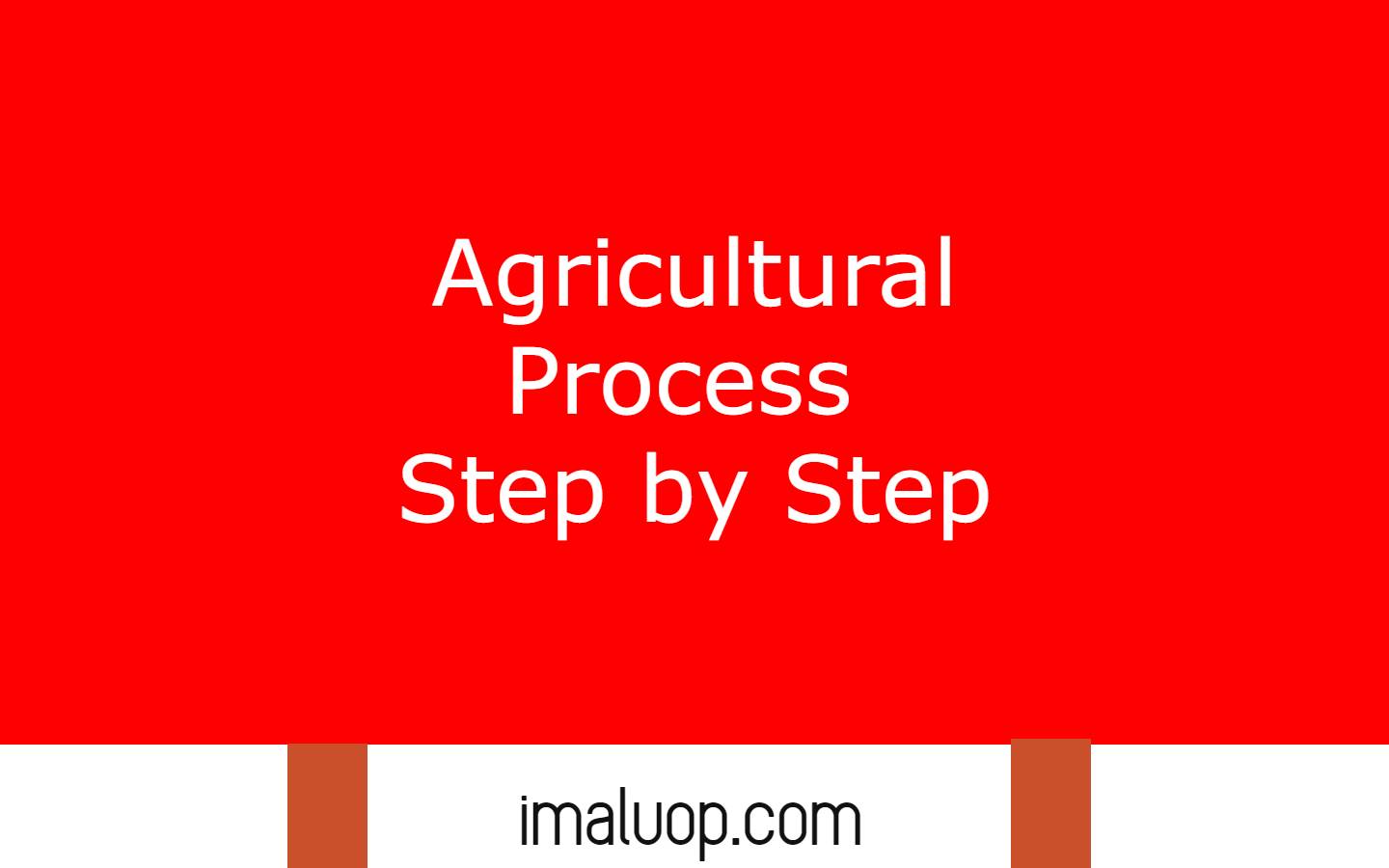Agriculture is a long term process and it has different steps that need to be followed in the correct sequence. We will discuss now about all the agricultural process step by step. To live we all need food and a major source of our food comes from agriculture. Cultivation started from ancient times but present modern agriculture is a much evolved version of the ancient cultivation method.
Cultivation not only needs proper human knowledge but it depends upon various environmental conditions like soil nature, climatic conditions. Farmers perform different types of technology to improve the yield but everything becomes successful if environmental conditions favour the crops.
Now we are going to discuss all the steps in agriculture step by step:
Different Types of Agricultural Process:
Soil Preparation: Soils are not ready for cultivation from the start. Farmers prepare the soil in different ways for different crops. Different practices like ploughing, leveling, manuring is very essential soil preparation before starting cultivation.
Soils are ploughed to losses and remove the unnecessary weeds with the help of different types of ploughing instruments. Ploughing is used for soil aeration by digging the soil. Then leveling is performed to distribute the soils in the crops evenly and then soil is manured to improve the nutrition level in soils.

Sowing: After the soil preparation seeds are sowed in the field but sometimes seeds are not sowed directly seedlings are used instead of seed. For example, paddy seeds germinate easily and their seedlings are used instead of their seed.
If the field is not very large we can disperse the seed in the field but if the field is very large then we can use different machinery like seed drill. It is a very important step because proper seed selection can give very high yield but it should be a careful decision during seed selection.
You can check more why we should use machinery to disperse the seed instead of human power to sow the seeds.
Manuring: Crops grow properly only when there is sufficient supply of nutrients supply they get from soil. Nutrients present in soil naturally but with time level of nutrients in soils decrease.
To maintain the nutrients level in soils we should give external supply of nutrients to the crops which may be organic natural nutrients (manure) or chemically synthetic nutrients ( fertilizers). Decomposition of plant and animal body is a source of nutrients for crops so we use them as manure.
Both manure and fertilizer have their own benefits and disadvantages as a source of nutrients. Manure, raising leguminous plants before sowing seeds, and vermicompost all increase the soil fertility.
Irrigation: Plants need sufficient amounts of water for their growth but very much water or very less water can damage the crops. So we should supply the water in a very efficient controlled way and for this process is known as irrigation. Water from ponds, dams, canals are used for irrigation in the field.
Unwanted Weeds Removal: In crops fields some unwanted weeds also grow along with the crops. Major portions of nutrients present in soil are consumed in the growth of weeds because weeds grow at a faster rate than the crops.
So crops are not able to get sufficient amounts of nutrients resources. We should remove the unwanted weeds to promote the crops growth. Some weeds are generally removed during soil preparation but with time new weeds grow in the field.
So removal of weeds at regular intervals is necessary to get a high yield. We can remove them using different types of weedicides available in the market or we can remove them by hands.
Harvesting the Crops: After the crops mature it is time to collect them together which is known as harvesting. Grains are separated from the plant body and it is done by manual process or using different machinery.
Storage of Grains: The grains are then stored in godown for future use in a place where we can protect the crops against rodents, fungus and other factors which can damage the grains.
Read More: Organic Farming Management and Advantages
Reference: Agricultural Process Step by Step
Hi Everyone!!! Welcome to Imaluop. Imaluop always try to learn some new and he want to share to other people. Here we will try to learn various topics on Science, specially on Biological Sciences.
